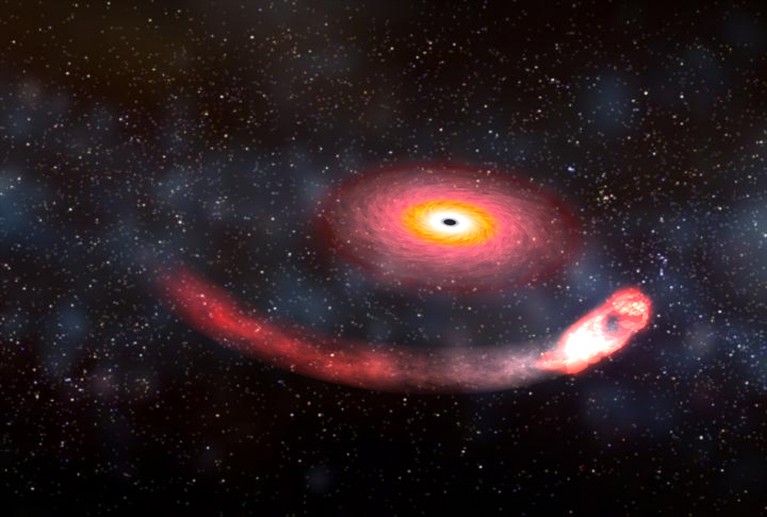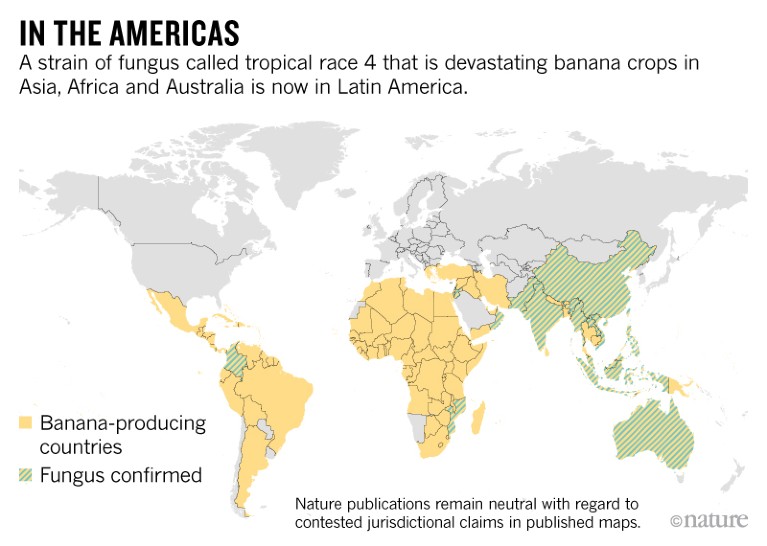EVENTS
July sets global heat record July was the hottest month ever recorded on Earth, the US National Oceanic and Atmospheric Administration (NOAA) said on 15 August. This marks the 43rd consecutive July, and the 415th consecutive month, that the global temperature has risen above its twentieth-century average. And 9 of the 10 warmest Julys in NOAA’s 140-year record have occurred since 2005. July 2019 was 0.95 °C warmer than last century’s mean of 15.8 °C, the agency said (pictured, The Hague, the Netherlands, during the July heatwave). Parts of Alaska, central Europe and southwest Asia were among the regions that experienced the warmest departures from average last month. The month came hot on the heels of the warmest June on record. The extra heat has helped to shrink Arctic sea-ice levels by nearly 20% — another record.

The Hague in the Netherlands on 24 July in the midst of a record-breaking heatwave.Credit: Phil Nijhuis/ANP/AFP/Getty
DISEASE
Ebola spreads The Ebola outbreak in the Democratic Republic of the Congo has spread to a third province, South Kivu. On 16 August, the World Health Organization (WHO) said that a woman and her baby in the province had been diagnosed with Ebola, and that the woman had died. She, her baby and a 5-year-old child had recently returned from Beni, a city in North Kivu province, where they had visited family members — including a person with Ebola. A third person in South Kivu was diagnosed with Ebola on 17 August, according to the WHO. Ebola responders are now attempting to track down the contacts of the ill people to help curb Ebola’s spread in South Kivu. The outbreak has infected nearly 2,900 people and killed more than 1,900, according to the WHO.
Tuberculosis drug The US Food and Drug Administration approved a treatment for an extreme form of multidrug-resistant tuberculosis (TB) on 14 August. Nearly 90% of people with extensively drug-resistant (XDR) TB who took this treatment during a clinical trial recovered in 6 months. The average success rate of current XDR TB regimens is around 34%. One drug in the combination — pretomanid — is the third new TB drug to be approved globally in nearly 50 years. The therapy was developed by the TB Alliance — a non-profit research group in New York City — and contains two other drugs, bedaquiline and linezolid. Roughly half a million people worldwide are diagnosed with multidrug-resistant TB each year, and about 8.5% of them have XDR TB, according to the World Health Organization. It says that drug-resistant strains of TB account for an increasing proportion of TB cases worldwide each year, even though the total number of cases has declined.
Measles surge The United Kingdom has lost its measles-free status. The country won ‘eliminated’ status from the World Health Organization (WHO) — defined as the absence of endemic measles transmission in a region for longer than 12 months — in 2017, on the basis of low case numbers in 2014–16. But infections in England and Wales jumped from 284 in 2017 to 991 in 2018, Public Health England reported on 19 August. The WHO said this month that the number of reported measles cases worldwide in the first half of 2019 was higher than in any year since 2006.
RESEARCH
Cosmic collision US and European detectors have picked up gravitational waves that are likely to be caused by the merger of a black hole and a neutron star (pictured, artist’s impression). The detectors of the Laser Interferometer Gravitational-Wave Observatory (LIGO) in the United States and Virgo in Italy caught a possible event of this kind for the first time in April, but the latest detection, on 14 August, comes with much higher confidence. Mergers of a black hole with a lighter object — such as a dense neutron star — can allow highly sensitive tests of certain predictions of the general theory of relativity. The LIGO–Virgo collaboration pinpointed the source of the latest gravitational waves more precisely than ever before, enabling conventional observatories to look for other signs of the merger, but the search was unsuccessful.

Artist’s impression of a black hole devouring a neutron star, an event that creates gravitational waves.Credit: Dana Berry/NASA
FUNDING
University cuts Alaska’s governor has agreed to restore about half of the US$130 million he slashed from the University of Alaska (UA) system’s budget last month. The new plan spreads $70 million in cuts across 3 years, beginning with $25 million this year. Governor Michael Dunleavy announced the compromise on 13 August at a press conference with John Davies, chair of UA’s governing board. The plan offers some hope for the more than 1,300 academics whose jobs have been at risk since UA declared financial exigency, which grants it the power to lay off tenured faculty members with 60 days’ notice, on 22 July. The UA governing board will meet in September to discuss how to distribute the cuts between the system’s three main branches. On 30 July, the board voted to move towards consolidating the UA system into one institution — which is still possible, UA president Jim Johnsen said on 13 August.
Support failures The leaders of three major UK research funders wrote to the heads of medical schools and universities in July to flag repeated failures to support trainees and mid-career researchers. The National Institute for Health Research, the Medical Research Council and the Wellcome Trust say they are increasingly concerned that institutions often ignore agreements to support trainees, postdocs and senior fellows once funding has been secured. The letter did not give details of specific cases, but it said that, in extreme instances, institutions are ignoring contractual obligations or pressuring researchers not to report their concerns to funders. The letter said that the failures in institutional support particularly affect female academics and trainees. The funders will start cataloguing cases and could withhold money if they see repeated problems.
SPACE
Philippines agency The Philippines is the latest country to create its own space agency, following in the footsteps of Turkey and Australia, which have set up such agencies in the past 18 months. President Rodrigo Duterte authorized the creation of the Philippine Space Agency, which was signed into law on 8 August and will coordinate all the government’s space-related activities and policy. These are currently spread across multiple agencies. The new body will focus on national security, hazard management and climate-change mitigation, as well as technologies such as satellites, boosting the country’s private industry and international collaborations. The agency will receive a starting budget of one billion pesos (US$19 million) from the Office of the President. Ongoing funding will come from the Space Development Fund, which was established under same the bill.
POLICY
Emissions lawsuit A coalition of 22 US states, the District of Columbia and 6 cities have filed a lawsuit seeking to block a move by President Donald Trump’s administration to ease environmental restrictions on the country’s power plants. The Environmental Protection Agency’s Affordable Clean Energy rule, finalized in June, replaces one of former president Barack Obama’s flagship climate policies, which sought to reduce carbon dioxide emissions from the energy industry to 32% below 2005 levels by 2030. The new rule eliminates national targets and allows states to set their own requirements for emissions reductions. The lawsuit, led by New York attorney-general Letitia James, argues that Trump’s rule would have almost no impact on greenhouse-gas emissions, and would increase US vulnerability to the effects of global warming.
TREND WATCH
A banana-killing fungus that has been laying waste to crops in Asia and Australia for decades is now in the Americas, which produce the majority of the world’s banana exports. Colombia declared a national emergency on 8 August after laboratory results confirmed the presence of the fungus, known as Fusarium wilt tropical race 4 (TR4), within its borders. This marks the first confirmation of TR4 in the Americas. Officials quarantined four farms in the northern part of the country in June, when they first suspected that TR4 was killing banana plants in the region. About 175 hectares have been affected so far. TR4 infects several varieties of banana and plantain, but is particularly harmful to the Cavendish, which is the main consumer variety and accounts for the lion’s share of global exports. The TR4 strain — which started destroying Cavendish crops in Asia in the 1990s, then spread to Australia and, later, Africa — infects banana plants through the roots and spreads throughout the vascular system, starving the plant of water and nutrients. The fungus can be transmitted by moving infected plants from one area to another, or through water and soil.

Source: ProMusa



